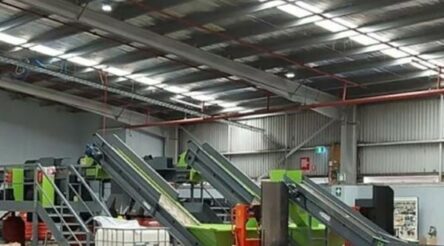Manufacturing culture as a lever for competitive advantage

Australian Manufacturing Forum member, Glenn Brien, co-founder of Salple, shows us how culture drives manufacturing performance.
Manufacturing is process intensive. So, it’s natural when you’re looking for competitive advantage, to look at process improvement first.
But what about culture? Can culture also be leveraged to help you hit your strategic goals?
PFERD Australia and Automatic Heating Global certainly think so.
Rather than free beer and ping pong tables, think of culture as “the way things are done around here”.
It is the ways of thinking and patterns of behaviour that shape how things get done – it is the habits of your organisation.
WhyWayDo is a simple framework for deliberately designing your culture in such a way that it contributes to achieving your strategic goals.
WhyWayDo helps everyone in the company focus on “what matters most”.
“Why” is an articulation of your purpose. Why does your business exist?
To discover this, tap into your founding story. Challenge yourself to imagine how your customer’s lives are changed by what you do.
Your purpose can be a higher purpose – how humanity is improved by what you do; a functional purpose – what you do; or more likely, a hybrid purpose – how humanity is improved combined with how you do that.
For example, Automatic Heating Global’s (hybrid) purpose is to “design, deliver and maintain sustainable, energy efficient solutions that enable others to live and work well”.
A well-crafted, intentional purpose becomes a guide for every employee.
It means that when prioritising effort and making decisions people can ask themselves “does this advance our purpose?”. In a time of rapid change, this allows people to make decisions with certainty within their area of influence.
“Way” is your behavioural operating system. It should articulate the three to six values that are most important to how you operate and the behaviours that operationalise those values.
Your values should reflect both your DNA (who you are now as a company) and your aspirations (who you want to be or who you are when you are operating at your best).
For example, one of PFERD Australia’s values are “we build open and honest relationships through communication”.
Psychometric analysis of your team’s behavioural preferences can help identify seeds for your values. Behaviours are best represented at three levels: “Love to See”, “Expect to See” and “Don’t Want to See”, so people are clear on what is expected.
“Do” is an expression of your strategy. It includes a Shared Ambition that is co-created with your employees.
The Shared Ambition is the high-level articulation of your strategy. It’s a short sentence or paragraph that describe the common goal your company is aiming for in the short to medium term (typically 18 months) as you pursue your purpose (the Why).
“Do” also includes strategic goals for teams and individuals that support the Shared Ambition and advance the purpose.
A good framework for this is Objectives and Key Results (OKRs) popularized by Intel and Google.
The advantages OKRs have over Key Performance Indicators (KPIs) are that they are more adaptive to real-world changing circumstances and they incorporate the concept of failure as a pathway to learning, which encourages innovation.
In WhyWayDo, the “Why” and “Way” components will rarely change. The “Do” component however will change over time as the strategy unfolds.
Key to the technique is to deliberately consider the “Why” and the “Way” every time an objective for an OKR is written or the key results are updated.
Ask, how does this objective advance our purpose, and bring our shared ambition to life? And then consider how each value contributes to achieving it.
WhyWayDo can be captured as a Culture Code for your company. The best Culture Codes are co-created with all staff having the opportunity to be involved.
This ensures that everyone understands the strategy and their role in bringing it to life, as they advance your purpose. This is what creates true employee engagement.
Dr. Glenn Brien is a former Director at ANCA CNC Machines and now helps companies co-create authentic, living Culture Codes.
Picture: Glenn Brien
Subscribe to our free @AuManufacturing newsletter here.
Topics Manufacturing News
@aumanufacturing Sections
Analysis and Commentary Awards Defence Manufacturing News Podcast Technology Videos










